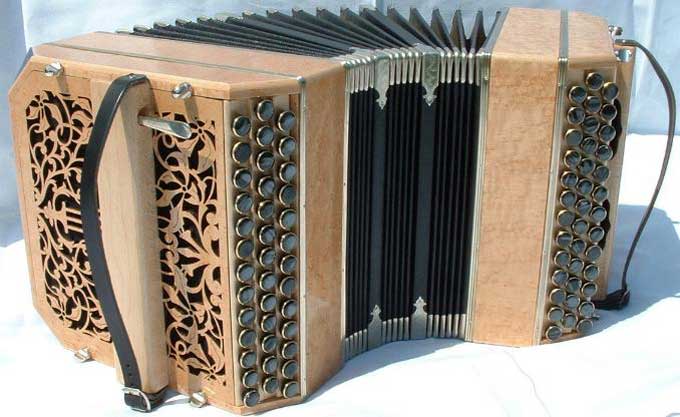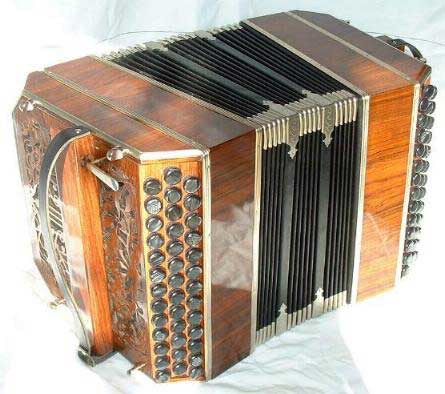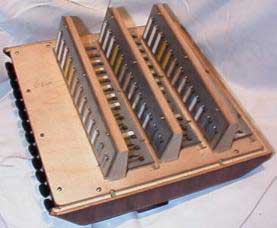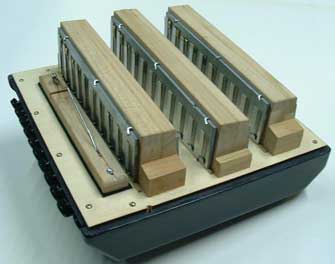Professional model C- , B- and Russian B-system bandonion
3- row model with traditional type bandonion reed plates in zinc
Logical uni-sonoric lay-out for the accordion player in search for the bandonion sound
Keyboards having mirrored (lay out ) Range ; left *A#A# – c5 / right g3 – a6
(*A#A# = lowest octave of the grand-piano)
Finish in bird’s eye maple veneer

Yet-black or ebonized(transparent black) finish


Finish in Rio- palissander (rosewood) veneer

Inside view reed plates (pictures below)
Reed blocks and reed plates are the same as used for our bi-sonoric bandonions!


Left: right hand side (professional model); right: left hand side ( medium model)
Check it’s sound !!!
Gabla Hybrid played by Norbert Gabla from his latest CD
SAMBAMILONGA (Norbert Gabla)
DJANGOCELLO (Norbert Gabla)
SOS (Norbert Gabla)
Basic price professional model: (11-01-2024) Euro 6850.-
Basic features:
Brown or black veneer French polish finish
White or black pearl imitation buttons
Hand made traditional type bandonion bellows with different retroprint Gustav marble papers you can choose.
Lay out and idea by NORBERT GABLA
For many years musicians and free reed makers have been trying to come up with an alternative lay out for the bi-sonoric producing different notes by alternating bellows direction) bandonion.
The reason for this was the fact that all the attempts lacked the possibility to play from musical scores, because of the illogical lay out, and technical short comings, such as the the fixation of the hand by the hand strap, which excluded the thumb in playing. The only variations which survived are the “Kusserow” and French systems.
The goal was to create a lay out which enabled the player to perform without technical or musical limitations.
The Gabla lay out enables the player to slide and rotate his hands in order to reach all the keys.
Accordion teacher and passionate tango player Mr. Norbert Gabla from Nürnberg (Germany), developed an alternative for the bi-sonoric bandonion layout.
After experimenting with all the known bandonion layouts (wich took him about 7 years), he came to me with his idea.
He told me about his wish to play tango music at a professional level without the need to suffer the learning process for the bi-sonoric bandonion.
Playing the tango music on the “free bass” accordion was not an option to him. The layout was based on the French accordion layout (C- in the first row).
Contrary to the uni-sonoric “Peguri” or “Pablo Caliero” lay outs favored by some French bandonion players, the keys on his instrument are situated at the front of the instrument, similar to the chromatic button- accordion.
In order to create a compact instrument, with the same range as the square bi-sonoric bandonions, on the first design lay out, we added a fourth row of keys to which contains the lowest-and highest notes.
Both left and right keyboard are mirrored, which creates unison fingering for both sides.
On later models the keyboard was reduced to having three rows only in order to have a 100 % logical lay out.
In order to enable the player to easily perform original solo tango compositions, which often consist of wide range chords, some of the low- notes on the left are doubled.
Feel free to contact us for detailed information’s